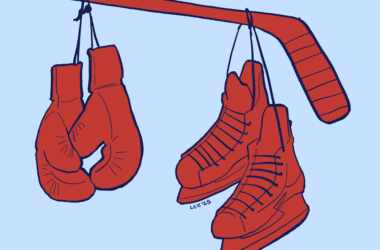On Nov. 16, Formula 1 (F1) made its first stop in Sin City since 1982. As the third and final American race of the calendar, the Formula 1 Heineken Silver Las Vegas Grand Prix (LVGP) is the penultimate race of the F1 season, one week before the Abu Dhabi GP kicks off almost 13,200 kilometres away. The decision to have back-to-back races located so far apart raises concerns about the environmental impact of the F1 season. However, the Fédération Internationale de l’Automobile’s (FIA) questionable environmental ethics were nowhere near the greatest concern of the disastrous weekend that was the Las Vegas Grand Prix.
Despite ticket prices dropping by up to 62 per cent before the event, the LVGP was one of the most economically successful F1 races in history, with an estimated $1.2 billion in economic impact for the city of Las Vegas. The race brought 315,000 fans, with non-refundable tickets and hotel deposits, and their expenses ensured the race’s financial success.
The LVGP faced significant technical issues from the get-go. In an attempt to cater to the European audience’s time zones, the race was set at night, not accounting for the extremely cold temperatures of the desert. On race day, the weather forecast predicted a minimum of seven degrees Celsius, prompting Pirelli, the official tire supplier of the FIA, to raise concerns about the drivers’ safety.
Mario Isola, the head of Pirelli, explained that cold reduces tire grip, increasing the chances of losing control of the car. This requires constant control of pace since the slightest slump in rhythm could put lives at risk simply from the tires cooling down. The only feasible solution was to change tires more frequently, as they are kept in heated blankets, going against Pirelli’s climate change action goal to limit the number of tires used. As the FIA decided to go forward with the race, McLaren driver Lando Norris’ accident came close to proving Firelli’s concerns. While officially the incident was caused by a bump on the track, the lack of grip on the tires heavily contributed to Norris losing control of his car and ultimately crashing into the barrier.
Despite starting on time, the LVGP came to a halt less than ten minutes after the Free Practice 1 (FP1) race began. One of the manhole covers was not properly bolted down, causing it to fly up, destroying the bottom of Carlos Sainz’s car––including his power unit––and sending sparks flying. The damages forced Ferrari to replace the car’s energy store––a set of batteries converting energy accumulated into electrical energy––despite each team only being allowed to replace them once per season. Ferrari requested an exemption from the regulations, citing external circumstances outside the team’s control, which the stewards denied, resulting in a ten-place grid penalty for Sainz.
This situation made fans wonder how such an incident was possible. FIA rules require that the initial inspection of tracks happens one day prior to the cars getting on them, yet the inspection only occurred at 3:30 a.m. (PST) on Thursday for the Strip Circuit. Moreover, recent changes in the Sporting Code loosened the level of exigence that the regulatory institution should have, granting the FIA the discretion to declare the circuit’s safety.
The subsequent inspection and repair of the track caused the FP2 to be pushed back to 2:30 a.m. PST on Friday. After the announcement of the delay, ticket-holders who had been waiting on the strip were forced to leave the venue. Many fans were single-day ticket holders for Thursday and their only solace was a $200 voucher to the official shop. On Nov. 18, Dimopoulos Law Firm filed a class-action lawsuit regarding the compensation of fans.
As talks of expanding the calendar resurface annually, the safety of the drivers and the audience must remain of utmost importance. After the extreme heat of the Qatar Grand Prix, the LVGP seemed to be the nail in the coffin for fans and drivers alike, encouraging them to ask for better conditions. Despite the remainder of the weekend carrying on relatively smoothly and Max Verstappen whisking away with another win, the FIA must unequivocally prioritize safety over superficial glamour and marketing ploys.







